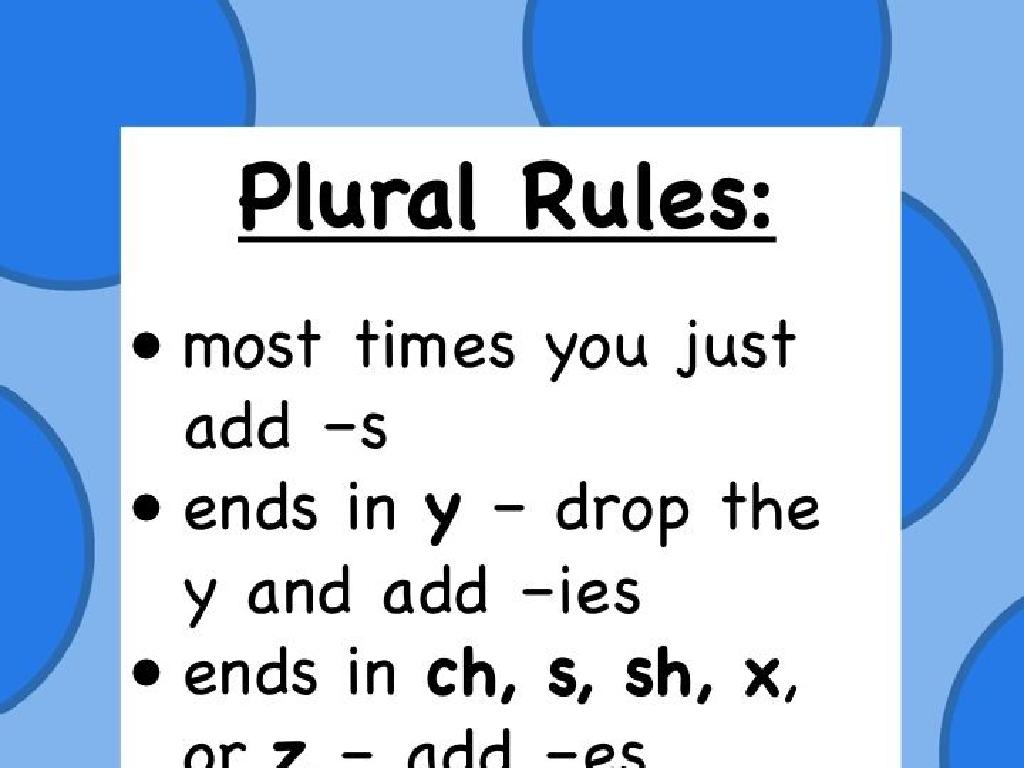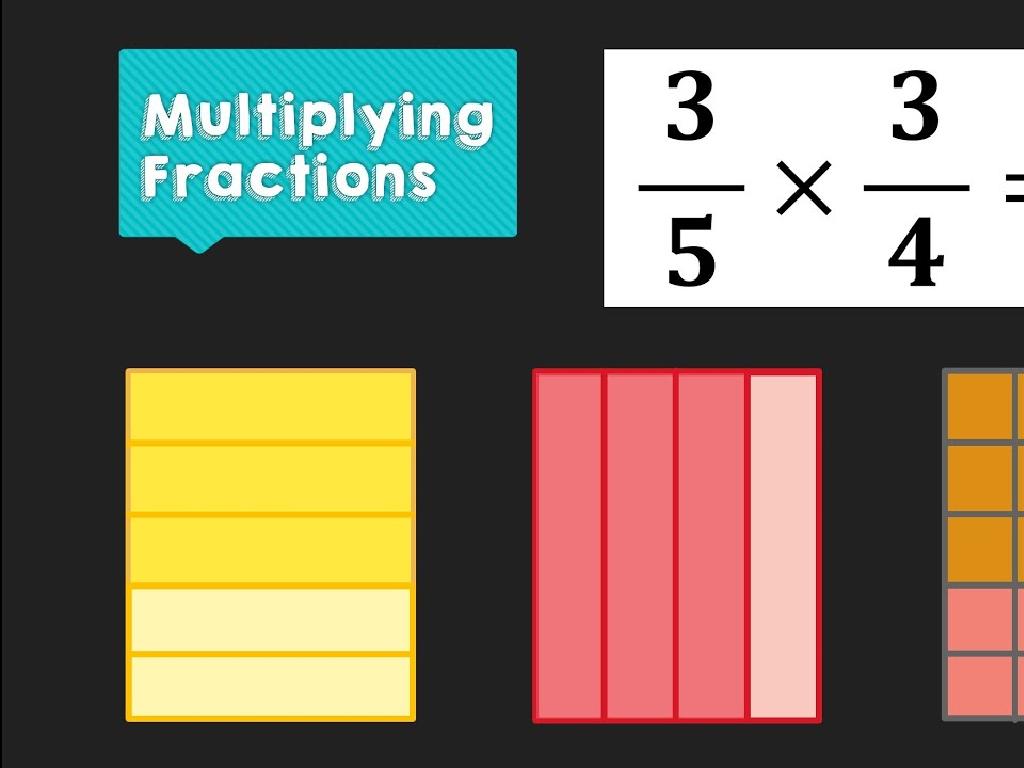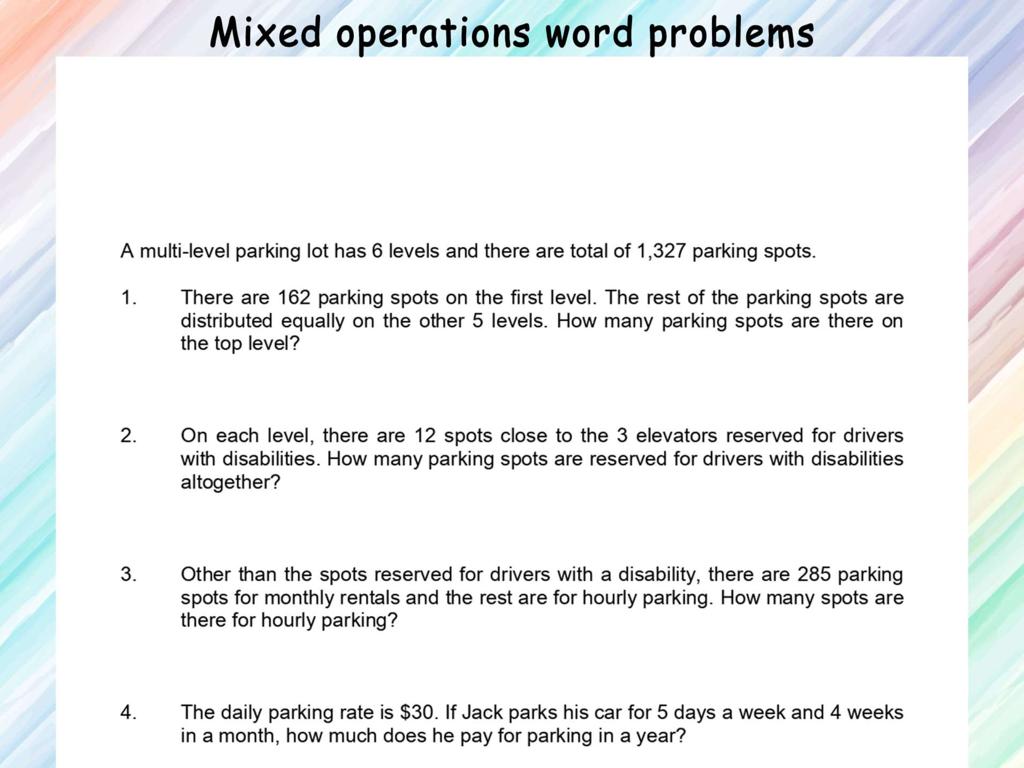Stoichiometry And The Mole
Subject: Science
Grade: High school
Topic: Chemistry
Please LOG IN to download the presentation. Access is available to registered users only.
View More Content
Introduction to Stoichiometry
– Understanding the mole concept
– A mole is a unit that measures amount of substance, akin to a dozen but for atoms/molecules.
– Defining stoichiometry
– Stoichiometry is the calculation of reactants and products in chemical reactions.
– Stoichiometry’s role in chemistry
– It’s crucial for predicting yields, guiding reactions, and conserving matter.
– Real-world applications
– Used in pharmaceuticals, environmental engineering, and material science.
|
This slide introduces the foundational concepts of stoichiometry, starting with the mole, a fundamental unit in chemistry representing 6.022 x 10^23 particles. It’s essential for students to grasp this concept as it relates to the quantity of substances involved in reactions. Stoichiometry itself is the study of the quantitative relationships between the substances as they participate in chemical reactions. Understanding stoichiometry is vital for students as it applies to real-world scenarios such as medication dosage, pollution control, and the creation of new materials. Encourage students to think of stoichiometry as a recipe for chemistry that ensures the right proportions of ingredients are used to get the desired product without waste.
The Mole Concept in Chemistry
– Define the mole in chemistry
– A mole is a unit that measures substance amount, similar to a ‘dozen’ but for atoms/molecules.
– Understand Avogadro’s Number
– Avogadro’s Number (6.022 x 10^23) is the number of particles in one mole of a substance.
– Relate moles to mass
– The molar mass on the periodic table allows conversion between grams and moles.
– Connect moles to particles
– Using Avogadro’s Number, we can find the number of atoms/molecules in a given mole.
|
This slide introduces the fundamental concept of the mole in chemistry, which is crucial for understanding stoichiometry. A mole is a standard scientific unit for measuring large quantities of very small entities such as atoms, molecules, or other specified particles. Avogadro’s Number, which is 6.022 x 10^23, represents the number of particles in one mole of a substance and is a cornerstone of chemical calculations. Students should learn how to use the molar mass from the periodic table to convert between the mass of a substance and the number of moles. Additionally, they should practice using Avogadro’s Number to relate moles to the number of particles. Provide examples and practice problems to reinforce these concepts.
Balancing Chemical Equations
– Necessity of balancing equations
– To obey the Law of Conservation of Mass; reactants must equal products.
– Steps for balancing equations
– Identify reactants and products, count atoms, add coefficients to balance.
– Practice with simple equations
– Example: H2 + O2 -> H2O. Balance hydrogen and oxygen atoms.
|
This slide introduces the concept of balancing chemical equations, which is crucial for students to understand the stoichiometric relationships in reactions. Start by explaining the Law of Conservation of Mass and why it requires that chemical equations be balanced. Then, outline the systematic steps to balance equations, such as counting atoms of each element and adjusting coefficients accordingly. Provide a simple equation as a class activity to practice balancing, ensuring students grasp the concept. Encourage them to work through the process step by step and to check their work by verifying that all atoms are balanced on both sides of the equation.
Stoichiometric Calculations: The Mole Concept
– Utilize balanced equations
– Balanced chemical equations provide the ratio of reactants to products.
– Understand mole-to-mole ratios
– Mole ratios are derived from the coefficients of a balanced equation.
– Convert moles to mass
– Use molar mass to change moles to grams.
– Mass to moles conversion
– Reverse the process, divide mass by molar mass to find moles.
|
This slide introduces the fundamental concepts of stoichiometry, focusing on the use of balanced chemical equations for stoichiometric calculations. Students should understand that the coefficients in a balanced equation represent the mole-to-mole ratios necessary for reactant-product conversion. Emphasize the importance of the molar mass as a conversion factor between moles and mass. Provide examples, such as converting moles of water to mass, to illustrate these conversions. Encourage students to practice these calculations with different compounds to solidify their understanding.
Limiting Reactants and Excess
– Identify the limiting reactant
– The reactant that runs out first, stopping the reaction
– Role of the limiting reactant
– It determines the maximum amount of product formed
– Calculate product from limiting reactant
– Use stoichiometry to find the amount of product
– Excess reactant concept
– Reactants left over after the reaction has completed
|
This slide focuses on the concept of limiting reactants in chemical reactions. The limiting reactant is the substance that is completely consumed first in a chemical reaction, thus determining the maximum amount of product that can be formed. Students should learn how to identify the limiting reactant by comparing mole ratios from the balanced equation. Understanding the role of the limiting reactant is crucial as it directly affects the yield of the reaction. Calculating the amount of product formed from the limiting reactant involves stoichiometric conversions, which is a key skill in chemistry. Additionally, students should be aware of excess reactants, which are substances that are not completely used up when the reaction reaches completion. Examples and practice problems can be provided to reinforce these concepts.
Understanding Percent Yield
– Theoretical vs. Actual Yield
– Theoretical yield is the max amount of product in a chemical reaction, actual yield is what’s really obtained.
– Steps to Calculate Percent Yield
– Percent Yield = (Actual Yield/Theoretical Yield) x 100%
– Factors Impacting Percent Yield
– Impurities, reaction conditions, and measurement errors can affect yield.
– Significance of Percent Yield
|
This slide aims to explain the concept of percent yield in stoichiometry. Begin by differentiating between theoretical yield, which is calculated based on stoichiometric predictions, and actual yield, which is the quantity of product actually obtained from a reaction. Emphasize the importance of calculating percent yield to evaluate the efficiency of a chemical reaction. Discuss various factors that can cause the actual yield to be lower than the theoretical yield, such as impurities in reactants, deviations from standard reaction conditions, and errors in measurement. Highlight that understanding percent yield is crucial for chemists to optimize reactions and for industries to maximize production efficiency. Provide examples of calculations and encourage students to consider how these factors might play a role in laboratory experiments they conduct.
Real-World Applications of Stoichiometry
– Stoichiometry in Pharmaceuticals
– Precise measurement of compounds for medication safety and efficacy
– Environmental Stoichiometry
– Balancing chemical equations to reduce pollutants and manage waste
– Stoichiometry in Daily Products
– Calculating reactants in products like baking soda for cooking
|
This slide aims to show students the practical applications of stoichiometry beyond the classroom. In the pharmaceutical industry, stoichiometry is crucial for determining the correct dosages of various compounds in medications, ensuring they are both safe and effective for consumption. Environmental applications include using stoichiometry to balance chemical equations that help in reducing pollutants and managing waste, which is vital for sustainability. Everyday products also rely on stoichiometry; for example, the correct proportions of reactants like baking soda are essential in cooking to achieve the desired results. Encourage students to think of other examples where stoichiometry plays a role in their daily lives to enhance their understanding of its importance.
Class Activity: Stoichiometry Lab
– Objective: Find Limiting Reactant
– Gather materials from Lab Handout
– Follow all safety procedures
– Wear goggles, aprons; no food or drink
– Document observations & calculations
– Record data to determine which reactant limits the reaction
|
In this lab activity, students will apply their knowledge of stoichiometry to determine the limiting reactant in a given chemical reaction. Before beginning the lab, ensure that all students have access to the lab handout, which includes a list of materials and the procedure. Emphasize the importance of lab safety by reviewing procedures such as wearing protective gear and proper handling of chemicals. Students should be instructed to carefully observe the reaction and document their findings, including measurements and calculations, to identify the limiting reactant. Possible activities could include reactions between vinegar and baking soda, or magnesium ribbon and hydrochloric acid, each providing a clear visual endpoint when the limiting reactant is used up. The teacher should circulate to provide guidance and ensure safety protocols are followed.
Wrapping Up: Stoichiometry and the Mole
– Recap of stoichiometry concepts
Stoichiometry involves the quantitative relationships in chemical reactions.
– Accuracy in stoichiometric calculations
Precise measurements are crucial for correct yield predictions.
– Encourage questions from students
– Reflect on the lesson’s applications
Understanding stoichiometry is essential for real-world chemical applications.
|
As we conclude today’s lesson on stoichiometry and the mole, it’s important to revisit the key concepts we’ve covered. Emphasize the role of stoichiometry in understanding the quantitative aspects of chemical reactions and how it allows chemists to predict the amounts of substances consumed and produced in reactions. Highlight the importance of accuracy in stoichiometric calculations, as even small errors can lead to incorrect results and potentially hazardous situations in practical chemistry. Open the floor for any questions the students may have, encouraging them to clarify doubts and deepen their understanding. Finally, reflect on how stoichiometry is not just a theoretical concept but a practical tool that is used in various scientific and industrial fields.





